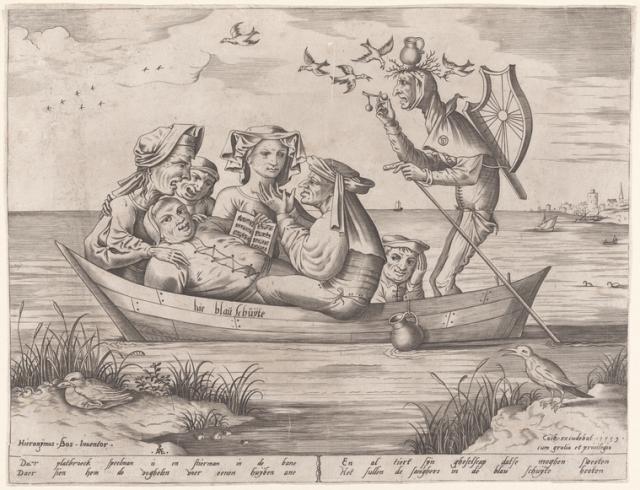
Pieter van der Heyden (Netherlandish, ca. 1530–ca. 1575) after Hieronymus Bosch (Netherlandish, ca. 1450–1516), The Blue Boat, 1559, Engraving
Commerce Goes to Hell
While Indies Company shares peaked in January 1720, the beginnings of hyperinflation as a result of the excess issuance of paper money signaled that trouble was already brewing. By February 22, John Law had shuttered his trading office, resulting in an immediate drop in share value. Dismayed at the sharp and sudden decline of their stocks, investors made runs on the French Bank and rioted in the streets of Paris. Matters only got worse when, in October, Quincampoix was closed for trading, by which time London and Amsterdam were in the throes of their own full-blown financial crises.
The Great Mirror of Folly represents the mania for investing and the shock of losing everything as a sort of living hell and, accordingly, frames the devil as one of the bubbles’ principal orchestrators. Operating as both an abstract idea and a real figure, Satan is at times synonymous with men like John Law or Robert Knight, the British cashier of the South Sea Company. Other times, he or his minions simply appear alongside Law and other figures, shifting and morphing, as befits an appetite for inflicting widespread misery. Whether oozing with malice or toying with their victims, they make the nightmare a reality for those unlucky, mad, or foolish enough to fall prey to their illusions.






